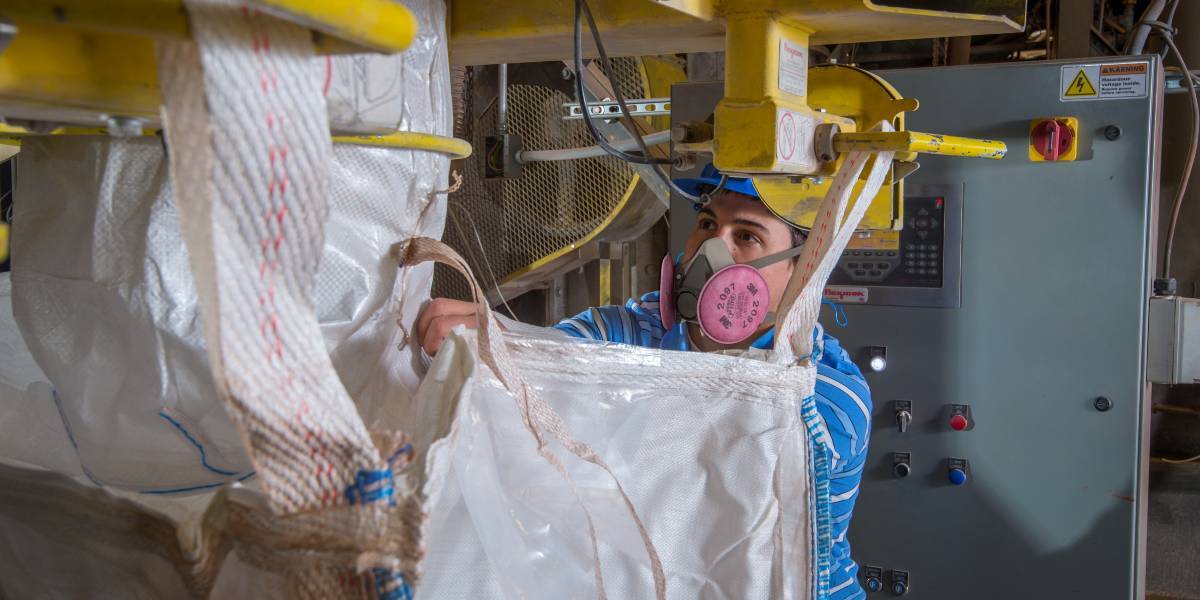Mechanical Milling Services: Crush, Pulverize, Hammer Mill & More

Milling and grinding processes are fundamental to processing of virtually every commercially manufactured product.
Foods and pharmaceuticals, paints and pigments, industrial chemicals, metals, minerals, ceramics, polymers … Nearly every material that’s part of a product formulation is first milled to reduce particle size and achieve a specified particle shape or morphology.
Particle characteristics can affect a powdered material’s flowability, bulk density, compactibility, and reactivity, so close control over particle size is an incredibly important aspect of product formulation and manufacturing.
Most toll milling processes used to reduce particle size fall within three main categories:
- Mechanical milling
- Jet milling
- Wet media milling
Each milling technology has its particular best applications based on material characteristics, end product specifications and uses, and more. But among the three major types of particle size reduction techniques customers look for in a toll processor, mechanical milling services probably offer the most variation in equipment, size ranges, and even suitability for varied raw feeds.
What is Mechanical Milling?
Mechanical grinding technologies use physical forces to break the structure of a raw feed material. Most often, impact, shear, friction, compression, and centrifugal forces are the key forces that act on particles in a mechanical milling process. The forces are applied to the particles by the moving mechanical parts inside the milling equipment.
Mechanical milling methods are often used to grind dry raw materials in powder processing, but some mill types achieve specifications that produce final products that are much larger than powder particles, such as pulverizing rock, ores, or other minerals.
Mechanical mill types can include:
- Roller mills
- Jaw crushers
- Impactors
- Pulverizers
- Hammer mills
- Universal mills
- Classifier mills
Hammer mills and universal mills employ rotors and hammers, beaters, pins, knives, or other parts to propel material against surfaces inside the mill, subjecting them to the forces that break them down. Parts are selected for the desired outcome, whether particles need to be more granular or powdered, how fine, and how tight the ranges need to be.
Jaw crushers and roll crushers fracture large particles between surfaces, and impactors can either strike material with a blow bar or project it so that the material strikes a surface. Impactors and jaw crushers create sharper-edged particles, while mill types that apply compression and shear forces tend to produce particles more rounded in shape.
The coarser milling equipment — such as roller mills, jaw crushers, impactors, and pulverizers — can handle starting sizes as large as 2 feet by 2 feet and deliver particles as small as 44 microns. Particle size control is less precise with these methods, so final particle size ranges are often quite wide.
The coarser particles produced by these mechanical mills can be needed just to feed some of the finer mill types. When that’s the case, these mills serve as a pre-crushing step before a raw material is subjected to another milling method, whether it’s headed for a mechanical mill or a jet mill.
On the other end of the particle size spectrum, hammer mills and universal mills are often used with smaller starting sizes, and can produce final particle sizes around one millimeter (or 50-2000 microns). A mechanical classifier mill can take particle sizes even smaller.
Important Considerations in Mechanical Crushing, Milling & Grinding
Mechanical milling techniques are well suited for friable materials that aren’t heat-sensitive, too sticky, or likely to melt at low temperatures. This is because mechanical milling processes create friction, producing heat. In cases that demand specific mechanical grinding processes for heat-sensitive materials, cryo-milling, or introducing liquid nitrogen to cool the equipment, can be a solution. Adjustments like this, of course, increase a project’s cost.
Extremely abrasive materials like ceramics and certain mineral oxides, and some very hard materials, can also pose problems in mechanical milling, due to their tendency to quickly wear out milling equipment. Specialty equipment parts may be available to make milling these materials more practical, so it’s key to consult with an experienced toll processor to plan in advance and understand all the processes and potential costs involved in a milling project.
High-moisture raw feeds or hygroscopic materials (which easily absorb moisture) can also cause challenges in mechanical milling, potentially building up and clogging equipment.
Combustible, hazardous, toxic, or explosive materials obviously can pose risks. The trust-based relationship between customer and toll processor is built on transparency, and that begins with ensuring every material is accompanied by a safety data sheet (SDS), and that explosivity data is provided for the final particle size. In addition to the basics of the SDS, any material knowledge customers can provide can help improve processes, increase efficiency, and lower costs.
Milling capacity, depending on mill type, can range from as little as 2kg of material on feasibility- or lab-scale equipment, to continuous feed production operations that can take railcars or truckloads in series.
Finding the Right Custom Mechanical Milling Services Provider
Mechanical milling projects can have a lot of moving parts, and an experienced toll processor fielding a team of experts can apply their own team’s knowledge to your project, potentially saving significant time, efficiency, and cost. But those savings are just a starting point.
A tolling partner with further downstream capabilities can do even more to take your milled material closer to its final step before leaving their operations. Investigate whether processes such as blending, dispersing, and packaging can all be performed by a single service provider, and you could shave many miles of transportation, time in transit, and administrative burdens from your project.
Learn more about the various forces, mechanisms, and applications for the different milling types when you download our free Milling Methods Comparison Guide. Click the link below to claim your copy today.


.png?width=100&height=110&name=CPS-Logo-rgb-no-callout%20(1).png)
